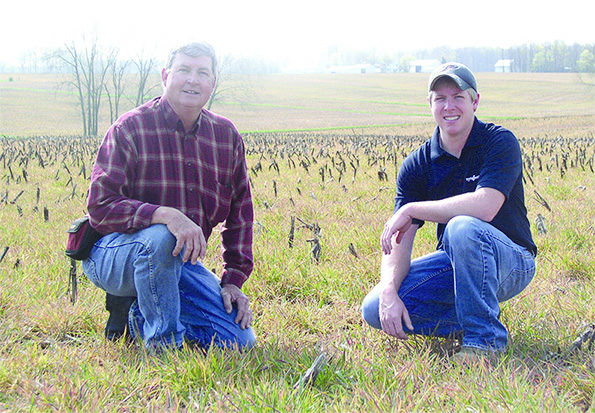No-Till Farmer
Get full access NOW to the most comprehensive, powerful and easy-to-use online resource for no-tillage practices. Just one good idea will pay for your subscription hundreds of times over.

NAME: Larry Huffmeyer
LOCATION: Osgood, Ind.
YEARS NO-TILLING: 39
ACRES: 1,300
CROPS: Corn, Soybeans, Wheat
The plains states lost their soil to the wind in the Dust Bowl, and we lose our priceless topsoil to water.
Wet, tight soils sitting on top of dense fragipan layers 36 inches below surface and a plow pan caused by decades of plowing have long been a barrier between us and perfect corn stands.
On our flat ground, the dense clays cause water to pool — creating anaerobic conditions that drown out crops. Rolling acres encourage runoff, allowing valuable topsoil and nutrients to escape downstream.
My dad, Kenneth, purchased our original farm in 1953, and for years we had a beef-cow herd and hogs. Our soils were somewhat protected in those early days due to a long rotation that included a pasture and hay rotation to support our livestock.
But as land and crop prices went up, economic pressure increased to raise corn and soybeans. We now grow about 650 acres each, with about 100 acres planted to wheat each year to allow for field improvements such as tiling.
The result of this has been more acres vulnerable to erosion and poor water infiltration. We realized that to reach 300-bushel corn someday, and be economical, we couldn’t be losing our topsoil.
My father purchased our first no-till planter — a 4-row Allis Chalmers planter with a coulter out front — when I came back to the farm after college.
Like most…